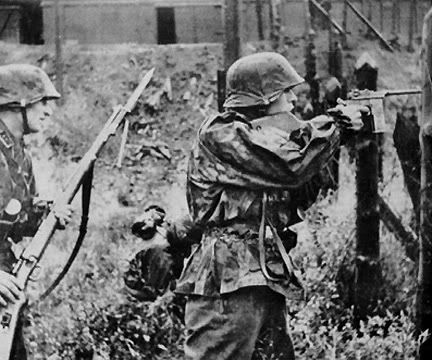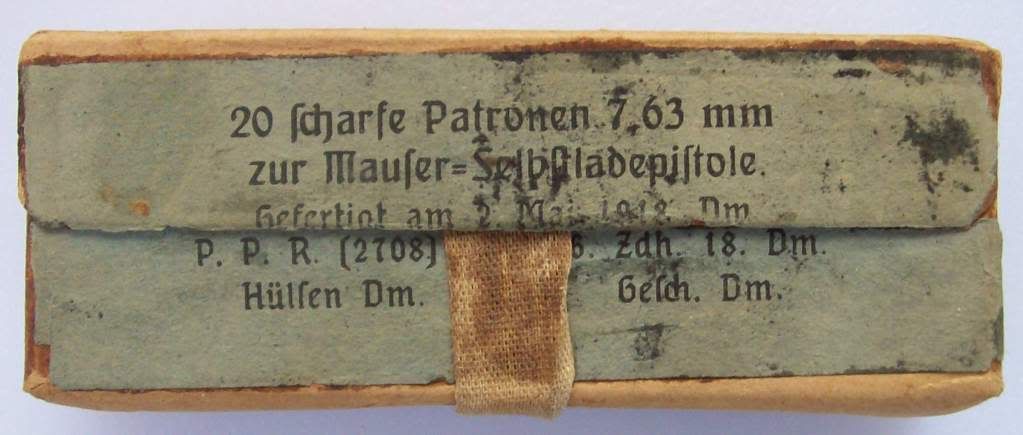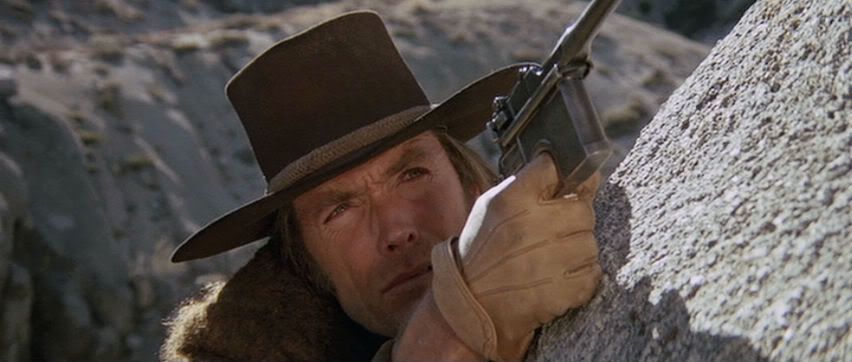Behind the Broomhandle: A Short History
A misconception is that Paul Mauser had some hand in the design of the Broomhandle Mauser. This is incorrect. Fidel Feederle was the Superintendent of the Experimental Works Shop within the Mauser factory, and had somewhat of a free reign to design as he saw fit. The actual design began around 1893, by the Feederle Bros. It entered into final design stages and was well past protyping when the asshole boss with the mustache finally noticed what was going on. Paul Mauser was actually kind of a huge dick: he was against the building of pistols and didn't encourage it. However he saw the auto loading pistol they had been working on and made the patent rights out to himself, leaving the Feederle Brothers pretty much uncompensated for their troubles of designing, prototyping, and fine tuning the actual guns. To further compound it, he went back to them and ordered redesigns. What a dick.
The design was not a military success, in that no military powers placed large orders for the pistol, but it was an immediate success on its own. No large powers placed huge orders, but the C96 was massively popular as an officer's weapon, a status symbol, and for special guards, police units, and troops. Think about it: at this time, being an officer in any given military means that you might be issued a saber and either a revolver or a compact pistol. The Mauser offered a short to long range weapon, featured a removable stock that doubled as a holster, and was already a prestige weapon. It just worked out on many levels. Germany, China, Indonesia, Persia, Turkey, Italy, France, Norway, and many other countries adopted it on a limited scale, and it saw widespread use in every war from the Boer Rebellion, the Russo-Japanese War, Boxer Rebellion, Balkan conflicts and through WW1, WW2 and others. It's last real usage was in the hands of the guards at Mao's tomb in China.
The Caliber itself was new to the gun, but like many other German pistol rounds, an improvement upon something else. 7.63x25mm evolved from 7.65x25mm Bordchardt. 7.62x25 Tokarev and others came much later. This should go without saying, but the C96 is not the paragon of strength: loading it with x25 Tokarev will not only blow the gun up, but might send the bolt straight back at your face. They are two very different loadings, do not mix them. I'd like to call .30 Mauser a common loading, but it really isn't. Fiocchi, S&B, and Prvi still made factory loadings for it. It should also be noted that .30 Mauser was a real powerhouse for years and years. At 1200 fps, it certainly was a real screamer, and pretty ahead of its time.
I'm really not great on mechanics: I'm no engineer. But the pistol itself is a marvel of engineering. There is only one screw in the entire gun, and that's the grip screw. The Gun itself is a crazy clock. I wish I could devote more time into it's correct method of operation, but honestly it wouldn't do it justice. If someone else wants to, I'd be glad.
Your Mauser: What Gun Do I Have?
If you have a Mauser Broomhandle and want to date it:
First off, it likes red roses and walks on the beach.
Second= Dating you Mauser is made fairly difficult by the fact that in 1945, a commanding US Army Officer ordered production and corporate records retained at the Mauser plant to be destroyed. There is no reason given for this.
This loss of records fucked over future collectors, as Mauser made a shit ton of different variants, special production models, prototypes, and special orders. With the pistol being as common as it is, this lead many people to begin forging their own fakes, re-serialing them, and marking them with crests of nonexistent European royal families, Middle Eastern sheiks, and so forth. There have also been instances of rearsenaled and retired frames being restored by actual legitimate companies, and eventually being resold without the information that they were newly made. In the 1980's, The Federal Company began buying up massive amounts of frames parts, building new ones, restoring old ones, all generally with an air of good intent. It was more or less a better run Century, with slightly better results. I almost never see these in circulation, but they are pretty easy to tell apart. If it looks brand new, chances are it is. Mausers have a barrel that is one piece with the receiver: unless they are relined, the bore eventually will suffer.
Im getting off topic. Lets discuss basic models and where they fit in the line of production.
Firstly, Prewar Commercials
They made a lot of these, and its actually the model I own as well. Most of the early pistols from 1896-1905 included lots of minor changes to the hammer, grip, sights, magazine etc, and the true commercial was the first real standard production model. They made around 240,000 between 1905 and 1914. These have the standard 50-1000 meter tangent sight, small ring hammer, etc. These will always be marked WAFFENFABRIK MAUSER
OBERNDORF A. NECKAR. Here's my beat to shit example:
Wartime Commercial: These had a big stamp on the back of the hammer. NS, or New Safety. The Safety is solid, with no hole.
1916 Prussian Contract: Better known as the Red 9. It was a Prussian Contracted 9mm with grips emblazoned with a big "9", let some dummies load it with .30 Mauser. Around 137,000 made, but because of its chambering, a very popular model. These were made 1916-1918
Postwar Bolo A postwar model, which production starting around 1920. Sometimes erroneously called a "small frame" mauser, they merely had a shorter barrel, not a smaller frame. These were made under the Treaty of Versailles conditions that barrel lengths must be under 100mm and calibers must be under 9mm. The reason for these being named the "Bolo" was due to their largest buyers being Bolsheviks, eventually adopting the slang name Bolo/Bolshevik. These are the second most common C96, with 345,000 made.
And everyones favorite day of Defeat bullethose, the M712 Schnellfeuer. These are very uncommon and an NFA. Surprisingly they actually made quite a few, around 100,000. However very few actually got exported before our NFA laws went into effect.

Please note that this is not even 1/4 of the models made, just the most common ones. Wikipedia's C96 article is actually almost entirely devoted to different contract models, and has nothing on history. Go figure.
The Mauser And Media
Let me preface this by saying that I have always, always wanted a Mauser C96. They are like the 1911, The Luger, and others, its an iconic design that has been in a million movies and roles. Its a universally recognized silhouette. Besides Star Wars, I think the neatest instance of the C96 showing up was in Joe Kidd, the 1971 Clint Eastwood western. Its actually a really underrated gun flick: they use lots of crazy stuff like Ross Rifles, Remington-Keenes, Savage 99s, 10ga Side by Sides, but one of the main bad guys spends a lot of time trying to scare Clint with his fancy Mauser, that is until Clint gets sick of his shit, kills him, and takes his gun. Check it's IMFDB entry: this gun has been in goddamn everything.
I hope everyone has enjoyed my little writeup.
Some Links and Further info;
http://en.wikipedia.org/wiki/Mauser_C96
http://www.northwest-denture.com/mauser1896
http://www.surplusrifle.com/pistolc96broomhandle/index.asp
http://www.imfdb.org/index.php/Joe_Kidd#C96_.22Broomhandle.22_Mauser









No comments:
Post a Comment